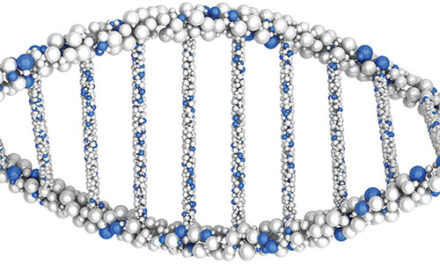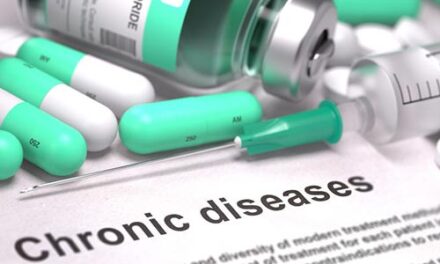Chemically, a fatty acid is an organic acid that has an acid group at one end of its molecule, and a methyl group at the other end.1 Fatty acids are typically categorized in the omega groups 3, 6 and 9 according to the location of their first double bond (there’s also an omega 7 group, but these are less important to human health).2 Now don’t panic if you’re not up on your chemistry; this isn’t going to be a chemistry lesson. I just wanted you to understand why a fatty acid might be called an omega 3 or omega 6 fatty acid.
The term essential fatty acid refers to a fatty acid, which the body cannot manufacture and must obtain from dietary sources. These essential fatty acids were originally designated as Vitamin F, until it was realized that they must be classified with the fats.3 There are two fatty acids designated as essential fatty acids: linoleic acid and alphalinolenic acid. This does not mean that the other 15 or so fatty acids found in the omega 3, 6 and 9 groups aren’t important, just that a healthy body can manufacture them as long as it gets enough linoleic acid and alpha-linolenic acid. Nevertheless, research demonstrates that there are health benefits to be had by obtaining some of the other non-essential fatty acids directly; more on this later. Now let’s discuss the roles of essential fatty acids (EFAs) in the body, as well as sources of EFAs.
Roles and sources of essential fatty acids
The body uses essential fatty acids (EFAs) for the formation of healthy cell membranes, the proper development and functioning of the brain and nervous system, and for the production of hormone-like substances called eicosanoids (thromboxanes, leukotrienes, prostaglandins). These chemicals regulate numerous body functions including blood pressure, blood viscosity, vasoconstriction, immune and inflammatory responses.4
Dietary sources of the omega 6 fatty acids include some leafy vegetables, seeds nuts, grains, vegetable oils and meats. Dietary sources of the omega 3 fatty acids include some vegetable oils, nuts and seeds, shellfish and fish.5 Dietary supplement sources of essential fatty acids and nonessential fatty acids include Evening Primrose oil, Borage oil, Flax seed oil and Fish oils (marine lipid concentrate). Now let’s take a look at some of these individual dietary supplement sources of essential fatty acids, and the benefits they have to offer.
Evening Primrose & Borage Oils: Sources of GLA The oils from the Evening Primrose plant and Borage seed are rich in the omega 6 fatty acid, gamma linolenic acid (GLA); as well as EFAs. Although fatty acids are found in significant quantities in a variety of plants, GLA is only found in a few. GLA is a precursor to various natural chemicals found in the body. Among these are prostaglandins, a type of short-term hormone-like substances, which play a variety of roles in the body. Published research on these sources of GLA have demonstrated them to be useful in PMS6,7,8,9,10,11, pregnancy and lactation12,13, inflammatory conditions14,15, rheumatoid arthritis16,17,18, skin conditions19,20,21,22,23,24,25,26,27,28,29,20,32,32,33,34, stress and performance35,36, as well as migraine headaches.37 Furthermore, the unique balance of GLA to EFAs in any one of these sources may have a distinct benefit over another source depending on the condition in question. For more detailed information on EPO and BO, read the Intelligent Supplementation article, “GLA: Gamma Linolenic Acid from Evening Primrose & Borage Oils.”
Fish Oils: Sources of EPA/DHA Omega 3 fatty acids
Eicosapentaenoic acid (EPA) and docosahexaenoic acid (DHA) are omega 3 fatty acids (O3FA). O3FA supplements are mostly derived from the oils of cold water species of fish like salmon, sardines, herring, and mackerel. There are many therapeutic applications for O3FA, primarily due to its cardiovascular-enhancing and anti-inflammatory benefits. Research has shown that O3FA cardiovascular benefits include reducing the risk of atherosclerosis38,39,40,41,42,43,44, modifying cholesterol levels (i.e., increasing “good” HDL cholesterol, while decreasing “bad” LDL cholesterol) and decreasing triglycerides45,46,47,48,49, and decreasing high blood pressure.60 O3FA have also been shown to block the production of certain inflammatory chemicals in our body. Consequently, studies have demonstrated the ability of O3FA to reduce inflammation in such disorders as rheumatoid arthritis51,52,53,54, asthma55,56,57,58, colitis59,60,61,62,63, Crohn’s disease64,65,66, and Lupus67,68,69. In addition, O3FA have shown to reduce the symptoms of other disorders including angina70,71, migraine headaches72,73,74,75, psoriasis76,77,78,79,80, and tinnitus.81,82 For more detailed information on O3FA, read the Intelligent Supplementation article “Omega 3 Fatty Acids.”
Flax Seed Oils: Sources of Omega 3, 6 & 9 fatty acids
Flax seed naturally contain a complex of different categories of fatty acids, including alpha-linolenic acid (omega-3), linoleic acid (omega-6), and oleic acid (omega-9). Much of Flax seed’s benefits are a function of its alpha linolenic acid (ALA) content, and the fact that ALA can be converted by the body into EPA—the same omega-3 found in fish oil. As a matter of fact, research has found that supplementation with Flax seed oil can effectively increase EPA concentrations in tissues.83 Lignans, also found in Flax seed, account for various benefits offered by this plant. Studies involving Flax seed have been conducted on its anti-inflammatory properties84, its antilupus properties85, and its cardiovascular enhancing properties.86,87,88,89,90,91
Just a quick note to mention that the omega 9 fatty acid, oleic acid, has been shown in research to lower heart attack risk and arteriosclerosis92, and aids in the prevention of breast cancer.93
Conclusion
In addition to the two essential fatty acids, there are other fatty acids whose consumption may have benefits for human health. Both the essential and non-essential fatty acids can be obtained from dietary supplement sources including Evening Primrose oil, Borage oil, Flax seed oil and Fish oils (marine lipid concentrate). Each of these sources has their own potential advantages. Perhaps a combination of all of them may yield the broadest spectrum of both essential and nonessential fatty acids.
References:
- Whitney EN, Cataldo CB, Rolfes SR. “Understanding Normal and Clinical Nutrition,” 5th ed. Belmont, CA:West/Wadsworth; 1998:141–75.
- Jones PJH, Papamandjaris AA. “Chapter 10—Lipids: Cellular Metabolism” IN Present Knowledge in Nutrition, 8th ed. Bowman BA, Russell RM (eds). Washington, DC: ILSI Press; 2001:104–14.
- Answers to Frequently Asked Questions. USDA Nutrient Data Laboratory, Agricultural Research Service. Last modified July 22, 2005. Accessed on August 18, 2005
- Davis B. Essential Fatty Acids in Vegetarian Nutrition. Andrews University Nutrition Department. Accessed August 18, 2005
- Whitney EN, Cataldo CB, Rolfes SR. Understanding Normal and Clinical Nutrition, 5th ed. Belmont, CA:West/Wadsworth; 1998:141-175.
- Horrobin DF, et al, J Nutr Med 1991; 2:259–64.
- Puolakka J, et al, J Reprod Med 1985; 30:149–53.
- Ockerman PA, et al, Rec Adv Clin Nutr 1986;2:404–5.
- Massil H, O’Brien PMS, Brush MG. A double-blind trial of Efamol evening primrose oil in premenstrual syndrome (1987) September, 2nd International Symposium on PMS, Kiawah Island.
- Casper R. A double-blind trial of evening primrose oil in premenstrual syndrome 1987; September, 2nd International Symposium on PMS, Kiawah Island.
- McFayden IJ, et al, Br J Clin Pract 1992; 46:161–4.
- D’Almeida A, et al, Women Health 1992; 19(2-3):117–31.
- Cant A, Shay J, Horrobin DF, J Nutr Sci Vitaminol 1991; 37(6):573-9.
- Chilton-Lopez; J Immunol 1996; 156(8):2941–7.
- Ziboh VA, Fletcher MP, Am J Clin Nutr 1992; 55(1):39–45.
- Vassilopoulos D, Clin Immunol Immunopathol 1997; 83(3):237–44.
- Rothman D, DeLuca P, Zurier RB, Semin Arthritis Rheum 1995; 25(2):87–96.
- Leventhal LJ, Boyce EG, Zurier RB, Ann Intern Med 1993; 119(9):867–73.
- Tollesson A, Frithz A, Acta Derm Venereol 1993; 73(1):18–20.
- Bahmer FA, Schafer J, Kinderarztl Prax 1992; 60(7):199–202.
- Schafer L, Kragballe K, Lipids 1991; 26(7):557–60.
- Kerscher MJ, Korting HC, Clin Investig 1992; 70(2):167–71.
- Horrobin DF, Am J Clin Nutr 1993; 57(5 Suppl):732S–6S.
- Manku MS, et al, Prostaglandins Leukot Med 1982; 9(6):615–28.
- Lindskov R, Holmer G, Allergy 1992; 47(5):517–21.
- Wright S, Bolton C, Br J Nutr 1989; 62(3):693–7.
- Businco L, et al, J Allergy Clin Immunol 1993; 91(6):1134–9.
- Morse PF, et al, Br J Dermatol 1989; 121(1):75–90.
- Fiocchi A, et al, J Int Med Res 1994; 22(1):24–32.
- Biagi PL, et al, Drugs Exp Clin Res 1988; 14(4):285–90.
- Bordoni A, et al, Drugs Exp Clin Res 1988; 14(4):291–7.
- Andreassi M, et al, J Int Med Res 1997; 25(5):266–74.
- Borrek S, et al, Klin Padiatr 1997; 209(3):100–4.
- Fiocchi A, et al, J Int Med Res 1994; 22(1):24–32.
- Mills DE, et al, J Hum Hypertens 1989; 3(2):111–6.
- Mills DE et al, Am J Physiol 1990; 259(6 Pt 2):R1164–71.
- Wagner W, Nootbaar-Wagner U, Cephalalgia 1997; 17 (2):127–30.
- Johansen O, et al, Arterioscler ThrombVasc Biol 1999; 19(7):1681–6.
- Enikeeva NA, Kitaiskaia LS, Antoniuk MV, Klin Med 1999; 77(3):25–8.
- von Schacky C, et al, Ann Intern Med 1999; 130(7):554–62.
- Sucic M, Katica D, Kovacevic V, Coll Antropol 1998; 22(1):77–83.
- Albert CM, Campos H, Stampfer MJ, Ridker PM, Manson JE, Willett WC, et al. Blood levels of long-chain n-3 fatty acids and the risk of sudden death. N Engl J Med 2002; 346:1113–8.
- Hu FB, Bronner L, Willett WC, Stampfer MJ, Rexrode KM, Albert CM, et al. Fish and omega-3 fatty acid intake and risk of coronary heart disease in women. JAMA 2002; 287:1815–21.
- Seljeflot I, et al, Thromb Haemost 1999; 81(4):566–70.
- Santos MJ, Lopez-Jurado M, Llopis J, et al. Influence of dietary supplementation with fish on plasma total cholesterol and lipoprotein cholesterol fractions in patients with coronary heart disease. J Nutr Med 1992; 3:107–15.
- Kromhout D, Bosschieter EB, Coulander CdL, The inverse relation between fish consumption and 20-year mortality from coronary heart disease. N Engl J Med 1985; 312:1205–9.
- Albert CM, Manson JE, O’Donnoell C, et al. Fish consumption and the risk of sudden death in the Physicians’ Health Study. Circulation 1996;94 (suppl 1): I–578 [abstract #3382].
- Ibid.
- Zak A, Zeman M, Tvrzicka E, Sb Lek 1997; 98(3):213–24.
- Morris MC, Sacks F, Rosner B, Circulation 1993;88:523–33.
- Alexander JW, Nutrition 1998; 14(7-8):627–33.
- Ariza-Ariza R, Mestanza-Peralta M, Cardiel MH, Semin Arthritis Rheum 1998; 27(6):366–70.
- de Deckere EA, et al, Eur J Clin Nutr 1998; 52(10):749–53.
- Vargova V, et al, Cas Lek Cesk 1998; 137(21):651–3.
- Villani F, et al, Respiration 1998; 65(4):265–9.
- Broughton KS, et al, Am J Clin Nutr 1997; 65(4):1011-7.
- Masuev KA, Ter Arkh 1997; 69(3):33–5.
- Masuev KA, Ter Arkh 1997; 69(3):31–3.
- Gramlich TL, Beeken W, Ann Intern Med 1992; 116(8):609–14.
- Aslan A, Triadafilopoulos G, Am J Gastroenterol 1992; 87(4):432–7.
- Almallah YZ, et al, Am J Gastroenterol 1998; 93(5):804–9.
- Salomon P, Kornbluth AA, Janowitz HD, J Clin Gastroenterol 1990; 12(2):157–61.
- McCall TB, et al, Aliment Pharmacol Ther 1989; 3(5):415–24.
- Geerling BJ, et al, Am J Gastroenterol 1999; 94(2):410–7.
- Kuroki F, et al, Dig Dis Sci 1997; 42(6):1137–41.
- Vilaseca J, et al, Gut 1990; 31(5):539–44.
- Kelley VE, et al, J Immunol 1985; 134:1914–19.
- Walton AJE, et al, Ann Rheum Dis 1991; 50:463–66.
- Westberg G, Tarkowski A, Scand J Rheumatology 1990; 19:137–43.
- Saynor R, Verel D, Gillott T, Atheroscl 1984;50:3–10.
- Mehta JL, et al, Am J Med 1988; 84:45–52.
- McCarren T, et al, Am J Clin Nutr 1985;41(4):874 [abstr].
- Glueck CJ, et al, Am J Clin Nutr 1986;43(4):710 [abstr].
- Gibson RA, Australian and New Zealand Journal of Medicine 1988; 18(5):713–22.
- McCarty MF, Medical hypotheses (1996) 47(6):461–6.
- Bittiner SB, et al, Lancet 1988; i:378–80.
- Kojima T, et al, Dermatologica 1991; 182:225–30.
- Kojima T, et al, J Am Acad Dermatol 1989;21:150–51.
- Dewsbury CE, Graham P, Darley CR, Br J Dermatol 1989; 120:581–84.
- Ashley JM, et al, J Am Acad Dermatol 1988; 19:76–82.
- Rudin, D., Med Hypotheses 1980; 6(4): 427–30.
- Rudin, D., Biol Psychiatry 1981; 16(9): 837–50.
- Mantzioris E, et al, Am J Clin Nutr 1994; 59(6):1304–9.
- James MJ, Gibson RA, Cleland LG, Am J Clin Nutr 2000; 71(1Suppl):343S–8S.
- Clark WF, et al, Kidney Int 1995; 48:475–80.
- Bierenbaum ML, Reichstein R, Watkins TR, Journal of the American College of Nutrition 1993; 12(5):501–4.
- Harris WS, Am J Clin Nutr 1997; 65(5 Suppl):1645S.
- Cunnane SC, et al, Am J Clin Nutr 1995 ; 61(1):62–8.
- Cunnane SC, et al, Br J Nutr 1993 ; 69(2):443–53.
- Prasad K, Atherosclerosis 1997; 132(1):69–76.
- Nestel PJ, et al, Arterioscler Thromb Vasc Biol 1997; 17(6):1163–70.
- Rotella P. Healthy Fats–Essential Fatty Acids. Posted 13 April 2002, Last updated 22 October 2004. Accessed August 19, 2005 from http://goodfats.pamrotella.com.
- Menendez JA, Vellon L, Colomer R, Lupu R. Annals of Oncology 2005; 16(3):359–71.











